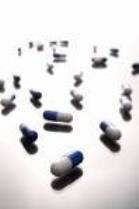Rheumatoid Arthritis and Rosehip Research
Whilst many of the advantages and benefits of using rosehip oil come from topical application to the face, some researchers are investigating other potential uses for the cocktail of chemicals that are present in rosehip oil. For example, research has been carried out into how rosehip oil may help sufferers of rheumatoid arthritis.

Rheumatoid Arthritis and Rosehip Oil Research Study
In a 2009 research study (1) the investigators found that a powder made from rosehips reduced the pain and symptoms associated with rheumatoid arthritis.In the study 89 people who had been diagnosed with rheumatoid arthritis were included in a double-blind placebo controlled study. Half of the study group were given a daily dose of 5g of rosehip powder in a capsulated form, the other half were given a placebo. They were instructed to take their capsules for a total time of 6 months after which time they were assessed using a Health Assessment Questionnaire and also a physician’s evaluation of disease activity.
The results of the questionnaire were encouraging as there was a statistically significant improvement in the rosehip group. The results of the placebo group deteriorated. The physician’s evacuation also indicated a significant improvement in the rosehip group with respect to the placebo. It should be noted that there was no difference in the intake of pain medication between the two groups.
The reason why rosehip powder may be good for rheumatoid arthritis is not clear although it’s anti-inflammatory and anti-oxidant properties are well established. If you are suffering from rheumatoid arthritis then it may be the case the taking rosehip oil may be an appropriate adjunct to your existing medications although it is recommended that you talk to your doctor before you take the supplement.
(1) S. N. Willicha, K. Rossnagela et al “Rose hip herbal remedy in patients with rheumatoid arthritis – a randomised controlled trial” Phytomedicine Vol 17 Issue 2, Feb 2010, Pg 87-93
(1) S. N. Willicha, K. Rossnagela et al “Rose hip herbal remedy in patients with rheumatoid arthritis – a randomised controlled trial” Phytomedicine Vol 17 Issue 2, Feb 2010, Pg 87-93
